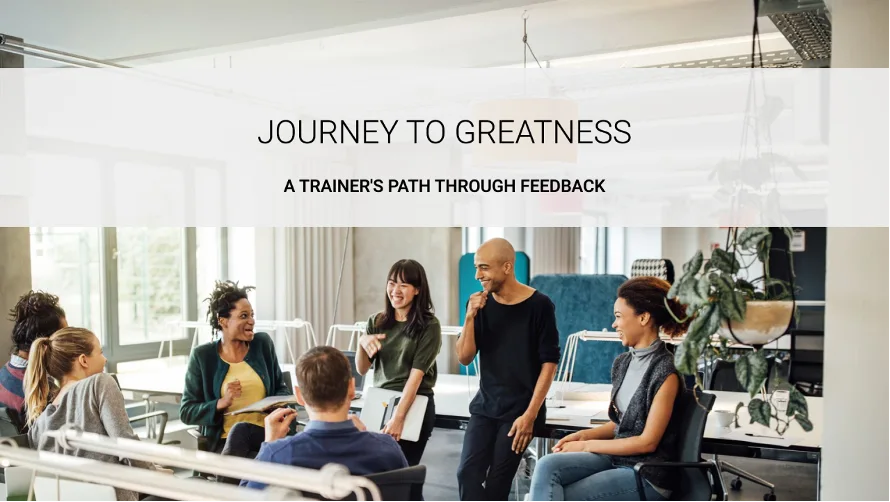Tell me and I forget, teach me and I may remember, involve me and I learn.” – Benjamin Franklin
This is a powerful message. It may only be a single sentence, yet it contains concepts that could take pages to completely express. This quote has always guided me in my training career, reminding me of my main goal.
As an HR professional and trainer, my primary goal while conducting a training session is to provide participants with knowledge, practices, and tools that they can use to better improve their skills—not just in their current role, but also beyond. While improving their current job performance is vital, my main objective is to help participants have a transformative experience that develops critical thinking and problem-solving skills. When participants learn how to acquire and continuously improve these skills, they will profit from the training for the rest of their lives, using it to their advantage long after the course finished.
Personally, I’ve been lucky to meet many great trainers who have influenced my professional development. These trainers served as role models for me. The most influential aspect they all shared was their attitude to providing, which included transferring on knowledge and experiences, as well as their excellent personalities, which made those trainings memorable.
Aspiring to be like these role models, I’ve discovered that one of the most effective methods for lifting a trainer from good to great is feedback from participants. Feedback, in general, is critical for improvement and growth, but it is especially important in training. In any learning context, feedback serves as a direct communication path between the trainer and the learners. It provides critical insights into what is working effectively and what requires improvement. Feedback ensures that the training is effective, relevant, and ideal for the participants’ needs.
Trainers can use feedback to make real-time adjustments to improve the learning experience, increase engagement, and ultimately lead to better outcomes for everyone involved. It also fosters a culture of continual growth, allowing trainers and participants to advance their skills.
In every training session I provide, I ask participants for feedback on the course and on me as a trainer. These feedbacks teach me a lot and make me feel good because they help me understand what works well and what needs to be improved.
In my most recent HR Management course, I received many positive remarks, but one in particular climbed out to me since it both satisfied and pushed me to continue developing. Ana stated in her evaluation, “During this course, when you were talking and exchanging experiences, it felt like a lighting went on in my head. I kept coming up with ideas and strategies to deal with difficulties at work. I took notes on all of the ideas I had during the training, and I’m excited to get back to work and put them into action.” This was a fantastic piece of feedback for me! My main goal, to stimulate critical thinking and problem solving, was accomplished.
While this comment provided me with immense satisfaction, it also inspired me to work even harder to guarantee that this aim is met in every training session I conduct. Based on my experiences and the lessons I’ve learned from participant feedback, I’d like to offer a few practical recommendations for trainers on how to improve their participants’ critical thinking and problem-solving abilities:
1. Encourage Active Participation: Involve participants in conversations, case studies, and problem-solving activities that require critical thinking and application of what they’ve learned.
2. Use Real-World Scenarios: Present real-world challenges or scenarios that participants could face in their jobs. This allows participants to apply the instruction to their actual work and develop practical solutions.
3. Foster a Safe Learning Environment: Create the environment in which participants feel comfortable sharing their ideas and solutions, even if they are not perfect. This encourages free discussion and critical thinking.
4. Provide Constructive Feedback: Provide feedback that pushes participants to think more deeply and boost their solutions. This not only helps participants grow, but also highlights the importance of critical thinking.
5. Promote Reflection: Encourage participants to think about what they’ve learned and how it applies to their work. Reflection reinforces learning and increases long-term retention.
6. Incorporate Collaborative Learning: Group activities and discussions can spark fresh ideas and views, hence improving problem-solving skills through teamwork.
By focusing on and implementing these tactics, trainers can not only achieve their objectives, but also make a lasting impression on their participants, assisting them in developing fundamental skills that will guide them effectively throughout their careers.

